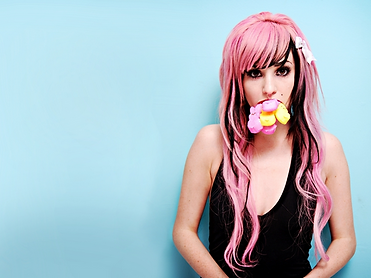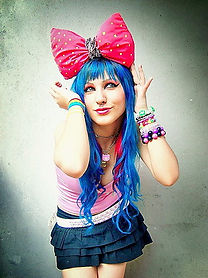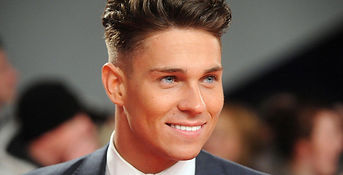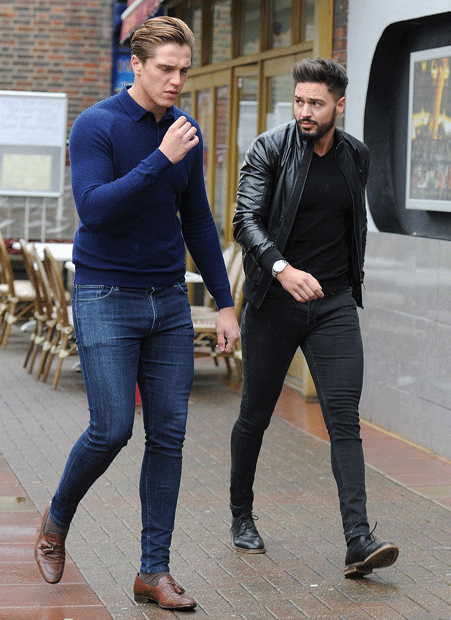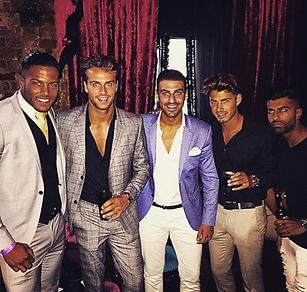STYLE TRIBES
MODS
The term mod used in the 1950s derives from modernist, to describe modern and Jazz Fans Mods were initially a small group of London based young men who emerged during the modern jazz boom of the late 1950s. However it became more popular in the 1960s during the period often referred to as swinging London. This style tribe also spread to the US and other parts of the world and still continues today on a small scale. Significant elements of the mod subculture include fashion, music and motor scooters during this period. They attempted to appear stylist and classed themselves as sophisticated by wearing tailor made suits. In comparison to their rivals, the Rockers who in were associated with leather jackets and larger motorcycles.
Mods tended to be working class, very rarely were the upper social and economic classes represented in this style tribe. Women too became part of this subculture. They dressed androgynously, with short haircuts, flat shoes, and little makeup with false eyelashes. Fashion designer Mary quant became famous during this time for her mini skirt designs and models like Jean Shrimpton and Twiggy became icons of this mod look. There was a mod revival in the United Kingdom in the late 1970s and in the early 1980s in North America. This revival was partly inspired by the 1979 film Quadrophenia and by mod-influenced bands particularly The Jam. Most recently Topshop have a brought out a new collection for Autumn Winter 15 16 called ‘Mod Girl’. Inspired by the Mod fashion the collection consists of the knitted polo, double breasted coat and mini skirts.
SCENE KIDS
The contemporary subculture of the scene kid developed in the late 2000’s and progressed into the mid 2010’s in locations such as North and South America, Europe and Asia. Due to the vast social and cultural shift that occurred in the late 2000’s with the development of the internet and social networking sites, subcultures such as scene kids were taken on by an ever growing number of teenagers. This collective of likeminded individuals who shared the same interests in music, fashion and lifestyle banded together to create a recognisable and still evident subculture. As mentioned previously, the development of the internet enabled teenagers to socialise with one another on a global and vast scale, something that had previously never happened. Social networking sites such as MySpace allowed for scene kids to communicate with one another and develop their overall look. When it comes to their image, a scene kids hair is normally straight with a swept fringe, heavily teased for volume, and boldly coloured with bright streaks. Girls in particular have heavy amounts of black eyeliner around their eyes as well as multiple piercing including eyebrows, lips, and nose. Their fashion continues to emphasis on their entire vibrant appearance; skinny jeans, bright coloured tops, leggings, band tees, and plaid shirts are all a necessity for a scene kid.
This subculture in particular faced criticism, as do so many other subcultures (punks, skinheads etc.). For example, the scene kid subculture had been planned to be banned by several governments as they deemed it an anti-social fashion that had a corrupting foreign influence over young people. In Gaza, the Hamas government have been cracking down on skinny jeans, which are the staple choice of clothing for scene kids, as ‘an organized campaign to restore Islamic traditions and laws (Finley et al. 2013)’.
Although this is a subculture that has faced backlash from governments or the media, it is a strong subculture with many teenagers following and buying into this select tribe. It is a way for these young people to identify themselves with their peers and to feel connected to one another.
ESSEX BOYS
The Essex boy look is one that has evolved an spread to all corners of the UK, not just throughout essex. The combination of a quiff, super skinny jeans, ankle cleavage, and a v neck t shirt says you're young, look after yourself and care what you look like. The metrosexual male has not been uncommon, but in the last five years, it has become the norm for masculine men to take that little bit of extra care in there appearance. A big influence on this style tribe has been reality television, in particular, shows like The Only Way is Essex, Geordie Shore and Made in Chelsea. The geographical regions are diverse and spread throughout the country, yet all the male participants of these shows share the same overall look. Their haircuts generally consist of and short back and sides with a longer length on the crown which gives them a quiff or comb over style. On top of regular trips to their hairdresser, beauty maintainence involves tanning, teeth whitening and eyebrow grooming. For young girls, the Essex boy look has become something desirable, as it gives them the impression that the guy looks after himself, earns and fair amount and enjoys looking good. It's ultimately about the physical attraction. By looking 'sharp' and 'dapper' the guy attracts the girl. It may seem old fashioned, but chasing women seems to be the topic of most of the TV shows listed above, and therefore influences the behaviour of the viewers. This style tribe is also about faking it, to a certain degree. Guys who aren't as attractive or don't have as much money can get this look in a few easy steps, and conform to the 'cool' look of the moment.
